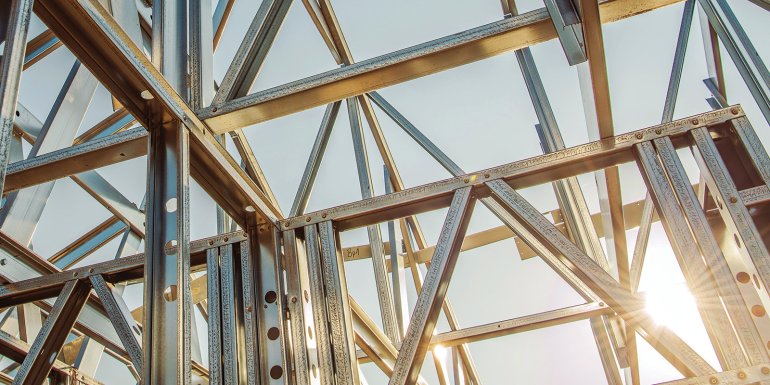CROSSUK - Report 1224

Collaborative reporting for safer structures. Report 1224: RAAC assessment undertaken by persons not suitably experienced.
A poor reinforced aerated autoclaved concrete (RAAC) assessment potentially put building users at risk from RAAC plank failures.
The reporter has been involved in undertaking RAAC surveys on buildings across England. Prior to each survey, the reporter’s firm undertakes a desk study to gather available information about the building, including plans, previous surveys, condition reports and any other relevant information that can be found. In one such desk study, they came across a report that contained the structural calculations used to establish the capacity of existing RAAC panels. The calculations, supposedly based on Eurocodes, used a proprietary software package and the parameters entered treated the RAAC as if it was normal structural concrete. This demonstrated a fundamental misunderstanding of the difference between RAAC and normal structural concrete, how RAAC would have been designed originally and how it should be assessed.
The reporter believes the fact that the assessment author did not realise the calculations were not suitable suggests that they were not an engineer. The inclusion of calculations in an assessment report could suggest to a layperson – including many building owners – a thorough approach to the RAAC assessment. However, a competent engineer would understand the calculations were inappropriate and made grossly optimistic assumptions about the properties of the RAAC.
The calculations used a compressive strength of 37N/mm2, whereas autoclaved aerated concrete (AAC) might more typically have a compressive strength of circa 3N/mm2. Significant other differences between RAAC and normal concrete were also not taken into account. Furthermore, the reporter states the assessment did not consider other RAAC-specific risks such as brittle failure arising from narrow bearings. Despite these failings, the assessment concluded the RAAC planks were fit for purpose. The reporter considers that if the owners of the building relied on the report, they potentially had an inaccurate picture of the building’s safety and, consequently, a large number of people could have been put at risk of harm.
The reporter concludes that the survey and assessment report appear to have been undertaken by someone without appropriate engineering knowledge and RAAC assessment experience. The reporter’s view is that the assessment of RAAC should only be carried out by a suitably experienced chartered structural engineer, and any client procuring a RAAC assessment should follow the guidance provided by the IStructE and ensure they only appoint suitably qualified and experienced individuals or organisations.
Comments
This is a worrying report because the assessment may well have been assumed to be competent. All persons responsible for buildings where RAAC is present must understand that assessment should only be undertaken by engineers with appropriate knowledge and experience.
There is a risk of structural failure of RAAC planks. Failure can be gradual or sudden and, if sudden, there is no warning. Because RAAC planks were most commonly used in roofs, sudden failure can be catastrophic. Structural failure can be caused by several mechanisms and it is now recognised that RAAC is considerably less robust than structural concrete and ages less well. It should, however, be noted that reported failures of RAAC are few, even with the intense media interest in September 2023.
As the reporter says, AAC is very different from normal dense concrete. It has no coarse aggregate and is made using fine aggregate, chemicals to create gas bubbles and heat to cure the compound. It is relatively weak, with a low capacity for developing a bond with embedded reinforcement. The unit weight and compressive strength of AAC varies greatly depending upon constituents and manufacturing process but, typically, AAC might weigh about 20% to 30% of normal structural concrete and may have only about 10% to 20% of the compressive strength of everyday structural concrete.
In the 1990s, there were instances of failure of RAAC roof planks installed during the mid-1960s, and a proportion of such installations were subsequently demolished. In 2018, the Local Government Association (LGA) and the Department for Education (DfE) contacted all school building owners about the collapse of a plank in a school and the SCOSS Safety Alert, Failure of reinforced autoclaved aerated concrete (RAAC) planks, was issued in May 2019.
Many buildings are overseen or managed by construction professionals such as surveyors, architects and engineers. However, it is also the case that the management of buildings can be the responsibility of persons who do not have any significant experience of buildings or construction. All persons responsible for the management and safety of buildings should be made aware of the significant concerns surrounding RAAC planks and panels.
The IStructE guidance, Reinforced Autoclaved Aerated Concrete (RAAC) panels: Investigation and assessment, provides identification and remediation solutions for RAAC planks. It states: “Assessments of buildings with RAAC panels are recommended to include a balance of risks for the continued use of the building against the benefit of strengthening or replacement of the panels. The assessment should include a robust risk assessment and include consideration to the ongoing monitoring and future management of the RAAC panels.
“The failure of the panels, which resulted in the SCOSS Alert, was a sudden failure and could be an indication that it was due to a brittle shear failure at or close to the bearing. Based on this, a cautious approach to the assessment of RAAC panels is recommended and assessments should only be undertaken by a chartered structural engineer with experience in the investigation and assessment of reinforced concrete structures.”
To subscribe to the CROSS UK newsletter (structural and fire safety concerns), visit cross-safety.org/uk/user/register
Further reading
- IStructE Reinforced Autoclaved Aerated Concrete (RAAC) Investigation and Assessment – Further Guidance (2023) provides further advice on the critical risk factors associated with RAAC panel construction, a proposed approach to the classification of these risk factors and how these may impact the proposed remediation and management of RAAC: bit.ly/IStructE_RAAC
- IStructE guidance Reinforced Autoclaved Aerated Concrete (RAAC) panels: Investigation and assessment: bit.ly/CROSSUK_RAAC
- DfE Reinforced autoclaved aerated concrete: estates guidance (2022) provides advice to responsible bodies in education settings on the process of assessing, investigating and developing a RAAC management and remediation strategy. The guidance includes matters to be considered when appointing an engineer who has the necessary knowledge and experience of RAAC: bit.ly/GOV_RAACguidance
- CROSS UK Structural safety of reinforced autoclaved aerated concrete (RAAC) planks provides a collation of all RAAC information published by CROSS: bit.ly/CROSSUK_RAACplanks










